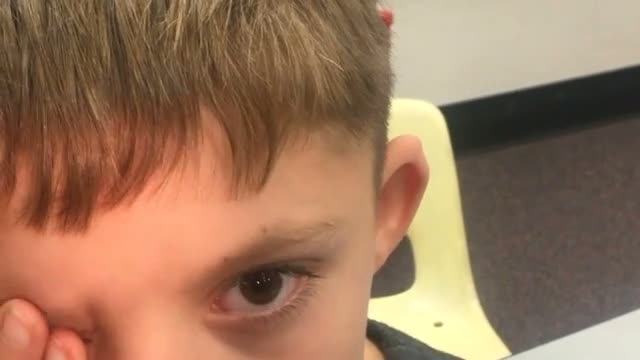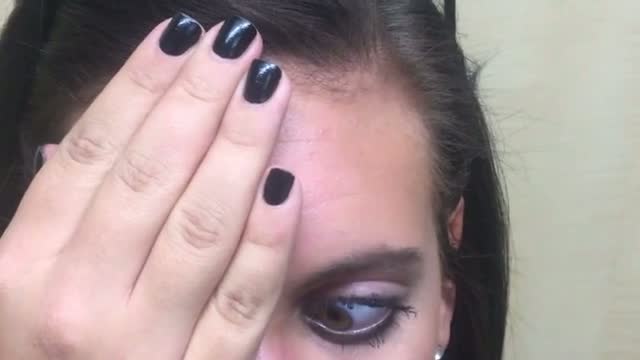Kim: Thank you for attending. I want to give you some additional information about myself. I work for a city school district and have 79 kids on my caseload this year. I am split between two schools and supervise a COTA. I am also one of the assistant tech evaluators for the district so I go to all 11 schools if needed. For many years, I presented live courses throughout the United States, and you can see these courses on my website, OTKimWiggins.com. I also have something called a Google Group. This group has approximately 2,000 members from across the world, and it is free. Most of us do not get to brainstorm our ideas or thoughts with others, and this is a way to do that. You need to email me to sign up for that. You can ask a question or share information, and other people will write back. I read everything first to avoid spam, and that is why your post might not show up immediately.
I have four children; four year old twins and a two year old. I am also the adoptive parent to a 17 year old boy, who was my OT student from the age of three. My husband and I became foster parents for him when he was six, and we adopted him when he was 10. He has special needs, and you will see him throughout my presentation. He has received OT since before I met him. I have many certifications because over the years if I noticed an area of weakness in John, I would learn everything I could to help remediate it for him. Then, I would become certified in that area to teach my other students. He likes that I talk about him in my presentations because he knows that it is helping others just like him.
He has decreased visual skills and has made an incredible amount of progress over the years. I will provide a lot of strategies today, and hopefully you will learn something new. One of the things that I like to do for myself, so I often recommend it to others, is to have a separate piece of paper handy. When I hear of a strategy that may help a specific student that I have, I write the student's name down, I write the name of the strategy, and then I write the slide number so I can go back and refer to it later. Sometimes there are so many strategies that it can be overwhelming.
As a side note, I do have a financial interest in Sensational Brain because I do my webinars through them; however, I am known for recommending a ton of other strategies, resources, and products throughout my courses. You will see that today; however, although I like those products, I do not have any vested interest in them.
Vision
According to the American Optometric Association, 80% of learning is acquired through vision. If you have ever had a student who is visually impaired, or even blind, you know that you have to completely revamp their curriculum. Any type of visual issue impacts everything they do. If I had to choose between having good near or far point vision, I would probably choose to have intact near point vision. We need near point or close vision for reading and writing. Check and see if your school nurse assesses near point vision. From traveling around the country doing webinars, I have found that most school nurses assess far point vision annually, but near point is either not done or it is only done once per elementary school career, around second grade. If they are doing it yearly, that is fabulous; however, if it is a larger school district, they most likely are not due to the ratio of students to nurse.
Babies can usually fixate on an object as early as five months old. There is a website called infantsee.org, which provides a list of doctors that provide free infant assessments. You want a baby to be screened for vision before age one, again at age three, before school starts, and then yearly after that. The problem is 10 million students have unidentified visual problems, and 70% to 90% of students with disabilities have visual issues. You may have students in your school that have been screened, but they may not have had any type of treatment to help them remediate those visual issues. Sometimes a student will be referred to you, and they have already been to vision therapy. Other times, you may feel that a student needs vision therapy; however, in many schools, you will not be able to recommend it because then the school district would have to pay for it.
What is Vision Therapy?
I wanted to know exactly what vision therapy was and how it compared to OT because of my son. I was interested to know exactly what the differences were. Vision therapy is often held in an office, and it must be performed under the supervision of an optometrist. They use sensory motor activities, computer programs, and specialized equipment. They have a variety of strategies that can help all aspects of vision, and they have far more experience with vision than an occupational therapist does. In addition to receiving a vision therapy service one to three times per week, they also require the student complete maintenance activities 15 to 30 minutes per day. This depends on the severity of the case. It would be great if they did OT homework daily 15 to 30 minutes a day, but it does not necessarily always happen.
Vision Therapy Research
Research has shown that home vision therapy is not as effective as in-office vision therapy as there is specialized equipment that is not available to the public. Vision problems, that require specialized vision therapy, need to be strictly monitored to avoid embedding any type of poor visual habits. For example, a piece of equipment a vision therapy office may have is called a Visagraph. This has computerized goggles with infrared sensors hooked up to a computer. With this, you can see what their eyes are doing and how they are moving as they are reading. If you type in the word Visagraph Visual Tracking on Google, you can see exactly how this works. It is pretty cool.
Many people, including doctors and optometrists, have stated that vision therapy is more of a business than an actual therapy. Some people are believers, while some are non-believers. I have attached a link to a document where someone compiled a lot of vision therapy research. Most of it is from the mid-90s, but there is more recent research, especially two studies from 2005 and 2008. The 2008 study was completed by Mitchell Scheiman, and it indicated that vision therapy is a treatment of choice for a student with visual issues. The one in 2005 is about the treatment of amblyopia of children between the ages of seven to 17. I also want to point out Lynn Hellerstein's website: http://lynnhellerstein.com/resources/. She is the author of the book See It, Say It, Do It. It has a great article about the collaboration between OTs and optometrists. You can find that on this PDF (http://lynnhellerstein.com/wp-content/uploads/2013/03/Collaboration-OT-and-Optometrists.pdf). There is a cool chart that shows how OTs and optometrists can collaborate on visual skills.
In my school district about eight or so years ago, I was getting a lot of referrals from parents that were taking their children to vision therapy, and they were no longer able to pay for it. It is usually not covered by insurance and can be very expensive. They knew that OT also worked on visual perception so they wanted me to replace vision therapy. I was confused at the time as I did not understand the difference between vision therapy and OT. This was also right around the time I started shadowing a vision therapist and bringing my own son for treatment. I did some research and found the website: www.visionandlearning.org. I thought this quote from this site really summed it up nicely.
There are crossovers between occupational therapy and vision therapy, particularly in the area of visual perception, eye-hand coordination and visual motor integration, though occupational therapists do not receive near the depth of training in vision nor are they trained in the use of lenses, prism and filters. Vision is a sensory-motor set of systems, so many times if a patient has difficulty with sensory integration, it is co-managed with occupational therapists.
It can be co-managed by OT, but it cannot be replaced with OT. We might be able to give out some exercises, but we are not going to formally assess it. We do not own or even know how to use the equipment that vision specialists use. You will not find a lot of research about visual processing in the OT literature, but more on visual motor skills. This also supports another reason why OTs may not be working on visual processing skills as best as they can in a school environment. There really has not been enough evidence-based research on how to do it.
A study by Heather et al. (2003) found that "intervention, including OT, can effectively improve visual motor skills in preschool-aged children." They provided OT for students with and without disabilities, and everybody improved with OT. Now with all this being said, hopefully I am going to be able to give you some tools for you to use in a school setting, a clinic, or at home. First, we need to have some sort of baseline by completing a visual screening.
Visual Screening
We can complete a visual screening, but we are not certified to do anything more than that.
Vision Test App
The Vision Test App is a visual acuity test. It is available for Apple and Android products. It has a couple of different features. It provides a pass-fail type of test, and it also has some eye advice and facts.
Eye Tracking
- Both Eyes: all directions
- Right eye: all directions
- Left eye: all directions
- Convergence: norm is see double 2-4” from eyes
- Esotropia – eye moves inward
- Exotropia – eye moves outward
- Hypertropia – eye moves upward
- Hypotropia – eye moves downward
I usually do some sort of eye tracking screening, and I add that in my OT report. I take a pencil with something on the top of it, like an eraser or a pen light, and I tell them to keep their head still and move their eyes. I move the pencil to the right, the left, diagonally, and up and down. I also have them take their hand, cover each eye, and do the same movements. You are looking to see if they have fluid or choppy movements. You also want to see if they can dissociate their head from their eyes.
After the scanning part, I keep the pencil about 16 inches away from their eyes, and I bring it towards their nose. I want to know when the pencil looks fuzzy or if they see two pencils. You are looking for them to cross their eyes when the pencil is around two to four inches away. Inward eye movement is esotropia and outward is exotropia. When their eyes draw upward, that is hypertropia. If their eyes are moving downward, and it seems like it is beyond their control, that is called hypotropia.
I am going to play a video right now. You are going to be able to see his eyes and the problems that occur.
Video 1.

He demonstrates some choppy or uncontrolled saccade movements. He has difficulty tracking in a smooth and coordinated manner with his eyes teaming together. He does not move his head which shows good dissociation of his head and eyes. This student has pretty severe ADHD. Even when he is on medication, he is always moving. His reading skills are below average but not nearly as poor as his ability to express himself in a written manner. He initially came to OT for handwriting concerns, which is pretty illegible. His spelling skills are very poor which makes it almost impossible to read anything that he writes. He is new to me, and I have not had any luck with getting him to practice these exercises. I am going to explain that more in a little bit. My plan is to put him on a visual tracking exercise program. This is not something that I am going to do with him every single day, but I can give the program to his grandmother, and she will be able to do it.
Now, I am going to show you another video of a person doing a very similar eye tracking test. What you are going to see are some pretty obvious differences.
Video 2.

As you can see in the 2nd video, she has had good, fluid, coordinated eyes moving together as a team in all directions. In addition to that, she was able to see two of the big orange balls at about two inches away from her face, which is within the normal range. You can also see that her eyes turned in together, and that is exactly what you want to see right around that range. If they are turning in together outside of the four inch range, then that is of concern. Sometimes when I do this assessment, I may notice that the eyes go in two different directions. For example, I may not initially see a lazy eye, but when they are forced to do something like this, it might bring that out. Doing a simple screening test like that is helpful, and you can add it into a report.
What to Write in a Report
I usually have a visual skills section where I add my observations. Here are some things that I may state in a report:
- "When examining both eyes together, there was poor dissociation of the eyes and head." This means that they could not move their eyes without moving their head; they had to do that together.
- "When examining eyes independently, the right eye exhibits choppy movements with poor dissociation observed." You comment on both eyes, and then you comment on each individual eye. You could also talk about their ability to scan and whether they had dissociation between their eyes and their head.
- "Student exhibits average convergence skills at a distance of 2-4” from the eyes." This is where you would state if they had the convergence skills or not. I had one student that when I put the pencil 16 inches away from his face and asked him to tell me when he saw double, he said, "I see double." This was even before I moved the pencil. I thought he just did not understand the directions, and I did it a couple of times to be sure. He said, "Mrs. Wiggins, I always see double." He was a fourth grader at the time. How did no one notice this before? He loved to read, but he always read hunched over the table with his eyes two inches away from the book. He wore glasses, but these were only helping his acuity. I think he was reading up close so that he could get his eyes to team together, which we are going to talk about in just a second.
- "Strong visual skills are imperative to academic success." I also usually throw something in like this in the visual skills section as a summary of why I am even screening this area. Difficulties in this area can present as challenges in processing visual information, interpreting information, and attention to task.
